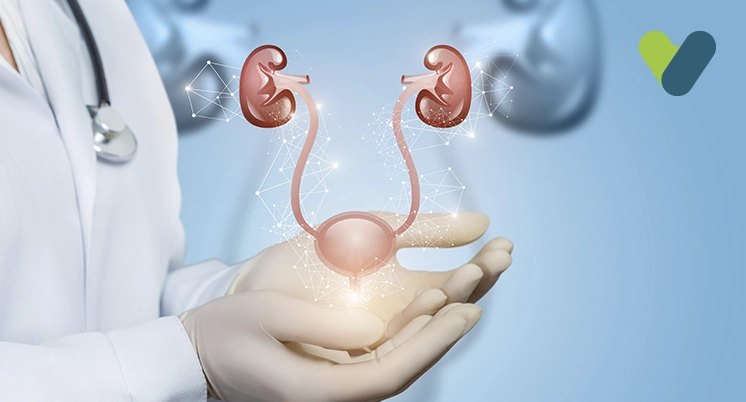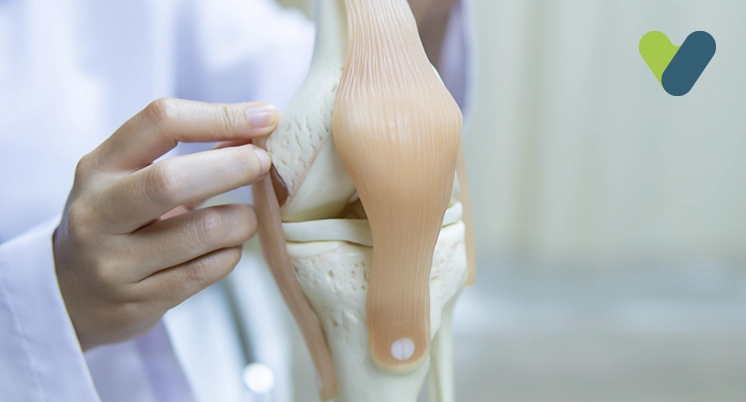Anterior cruciate ligament (ACL), which joins the tibia and femur, is a vital soft tissue in the knee. An ACL tear, whether partial or complete, is common injury among athletes. An operation called ACL reconstruction is performed when the ACL is ruptured. To strengthen and stabilise the knee, ACL tear surgery is conducted. Removing the damaged ligament's remains and replacing them with a tissue from a donor or some other ligament from the patient’s body is necessary to avoid further damage to the associated ligaments. ACL reconstruction surgery/ACL tear surgery involves repairing or reconstruction of the ligament (ACL).
Full ACL injuries are often treated with an ACL reconstruction technique by sports medicine doctors and orthopaedic surgeons, where the damaged ligament is restored through tissue transplant to replicate the natural ACL. The ideal treatment strategy for each patient is decided after a consultation with radiologists, rehabilitation specialists, orthopaedic surgeons, sports medicine doctors, and physiatrists.
The average ACL surgery cost /ACL reconstruction surgery cost in India is around INR 1,20,000–2,50,000.
Why is ACL surgery done?
When the ACL (among the 4 major ligaments of the knee) is injured, ACL tear surgery is performed. ACL tear is one of the most frequently seen knee ligament injuries. This injury can range in severity from a minor tear to a major tear, where the ligament and a portion of the bone disconnects from the remainder of the bone. Complete tears are the most common ACL injuries.
Depending on the extent of the ACL tear as well as the person's lifestyle, it is evaluated if surgery is needed. The main goals of the initial therapy are to manage pain, regain a range of motion, and stop future harm. It's crucial to get your knee moving again as soon to speed up recovery.
Young athletes, in particular, should have ACL reconstruction surgery if they are active in their day-to-day lives. For a safe return in sporting events and to avoid re-injury or further damage, knee stability is essential for an athlete. The likelihood of developing knee arthritis or weakness later on in life can be reduced with ACL reconstruction surgery.
What happens before ACL tear surgery?
You must opt for a pre-admission consultation before undergoing ACL tear surgery. You will be seen by a member of your medical team who will take care of you during your stay in the hospital.
You'll undergo a medical evaluation and be questioned about your medical problem. Also, you may be required to undergo certain studies and testing, such as an X-ray of your knee. Your doctor may inquire about the tablets or other medications you take, whether they are recommended by a doctor or over-the-counter from a drugstore.
A member of your medical team may inquire about previous anaesthetics treatment you've undergone as well as any complications or adverse effects, such as nausea, you may have experienced due to any anaesthetics. They'll also inquire about your dental hygiene, such as whether you have dentures (false teeth), crowns, or plates because there’s a possibility that a tube will be inserted down your throat during the procedure to assist you breathe, and any weak teeth could be harmful.
You should feel free to ask any questions you may have regarding the operation at the pre-admission consultation. Moreover, you are always encouraged to share any worries that you may have with your surgeon at any time before or after the procedure.
Procedure followed for ACL tear surgery?
Once you have been given anaesthesia, the surgeon will thoroughly inspect the interior of your knee, typically using a surgical device called an arthroscope. Your surgeon will evaluate your knee and look for injuries to other tissues to see if your ACL has been damaged. Any additional damage may be corrected either during or after the ACL surgery. Your surgeon will take out the graft tissue so it can be relocated after establishing that the ACL is torn.
Your ACL can be replaced with a variety of tissues. An autograft is a procedure in which your own body's tissue is used for this replacement. The term ‘allograft’ refers to the tissue obtained from a donor. A donor is an individual who has agreed to allow certain parts of his body to be utilised by those in need. Your surgeon will talk about the preferred option with you before the procedure.
For Inserting multiple medical devices (arthroscope), cuts could be made in your knee. With the use of these tools, the surgeon will repair your ACL and remove the damaged ligament. To insert the new tissue, your surgeon will drill a tunnel through your bone. With screws or staples that will stay in your knee permanently, the graft tissue will be secured in the same location as the damaged ACL.
Your surgeon will verify that the graft tissue is tough enough to maintain your knee intact once it has been fixed. They'll also make sure that your knee can move freely while ensuring that the graft maintains stability when your knee is stretched or moved. Once the surgeon is confident that everything is functioning as it should, they will close the incisions with stitches and dress them.
What recovery measures are taken after the ACL tear surgery?
Here is a list of things to keep in mind after ACL surgery.
- Exercise your ankles multiple times every ten minutes post ACL tear surgery. Maintaining this activity for 2 to 3 days will improve blood flow and stop blood from clotting in your legs. Inform your doctor if you experience severe calf pain. This may be the beginning of clot formation.
- Maintain a minimum of 45° elevation on your operated leg for the first 3 to 5 days following ACL reconstruction surgery. Support your leg on pillows or cushions so that your knee would be at a minimum of twelve inches above the heart.
- As prescribed by the doctor, use painkillers. They could be powerful narcotic medicines or over-the-counter (medicines that don't require a prescription) painkillers like ibuprofen or paracetamol.
- Start bending your knee gently. The intended range of movement is from 0° to 90° before your first post-operative visit.


